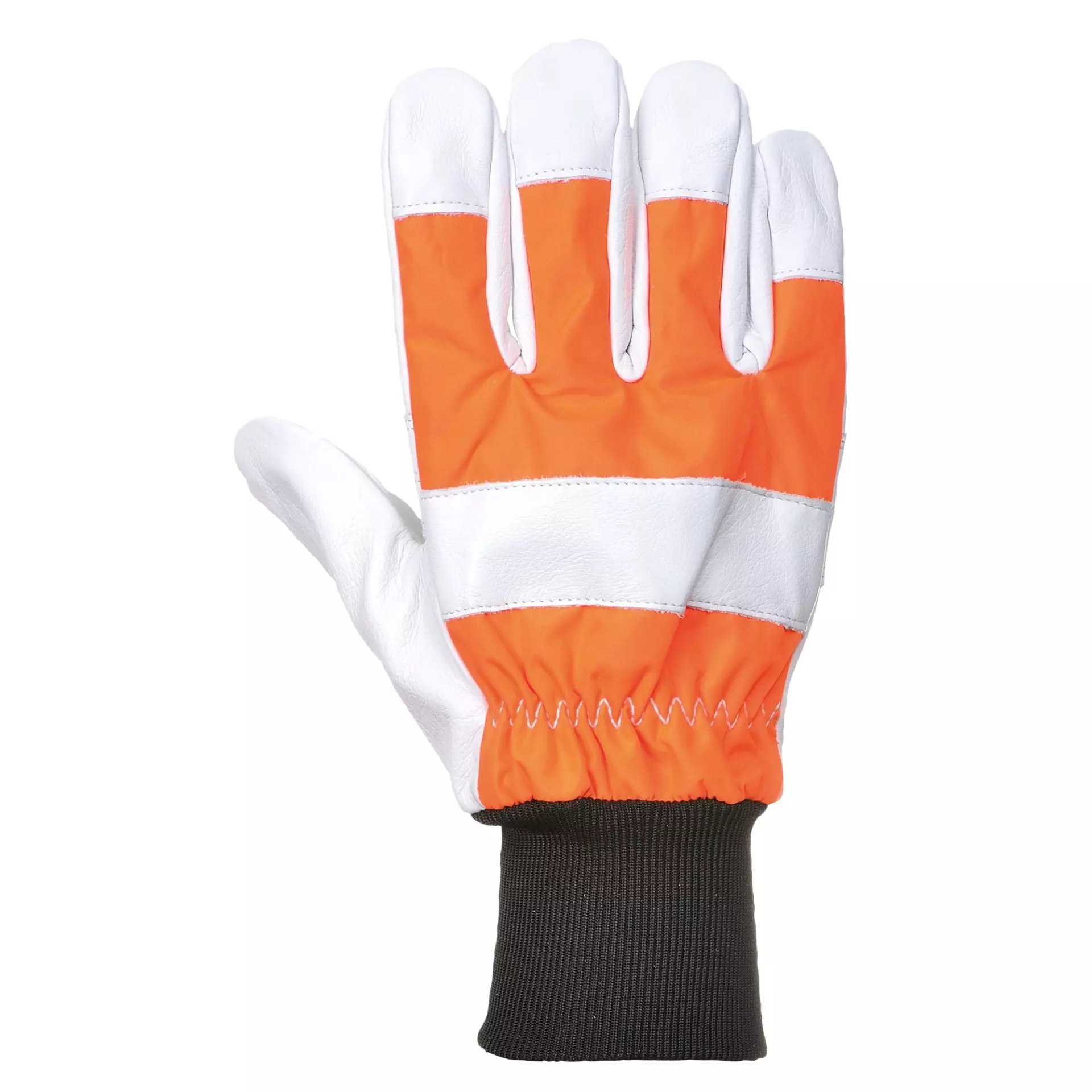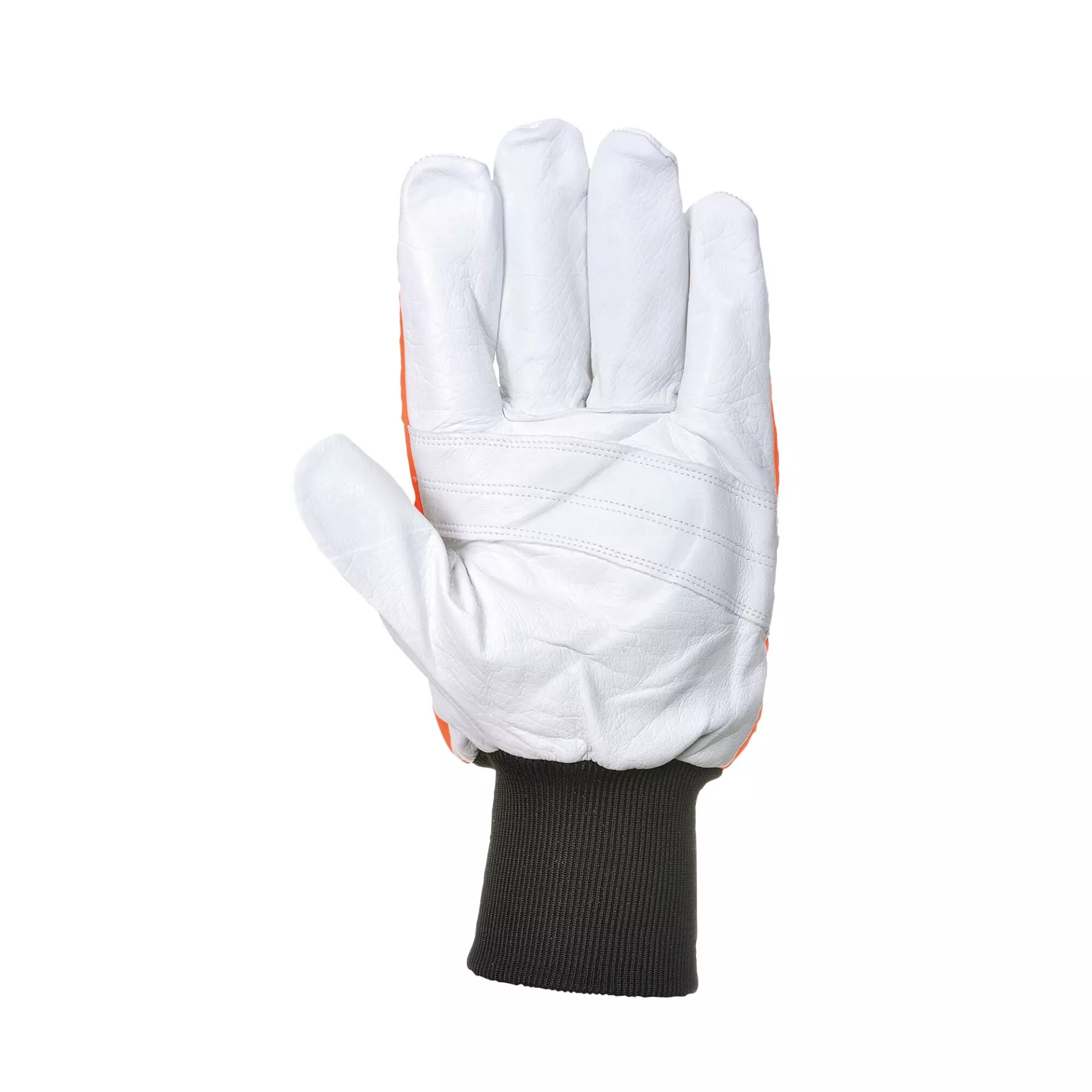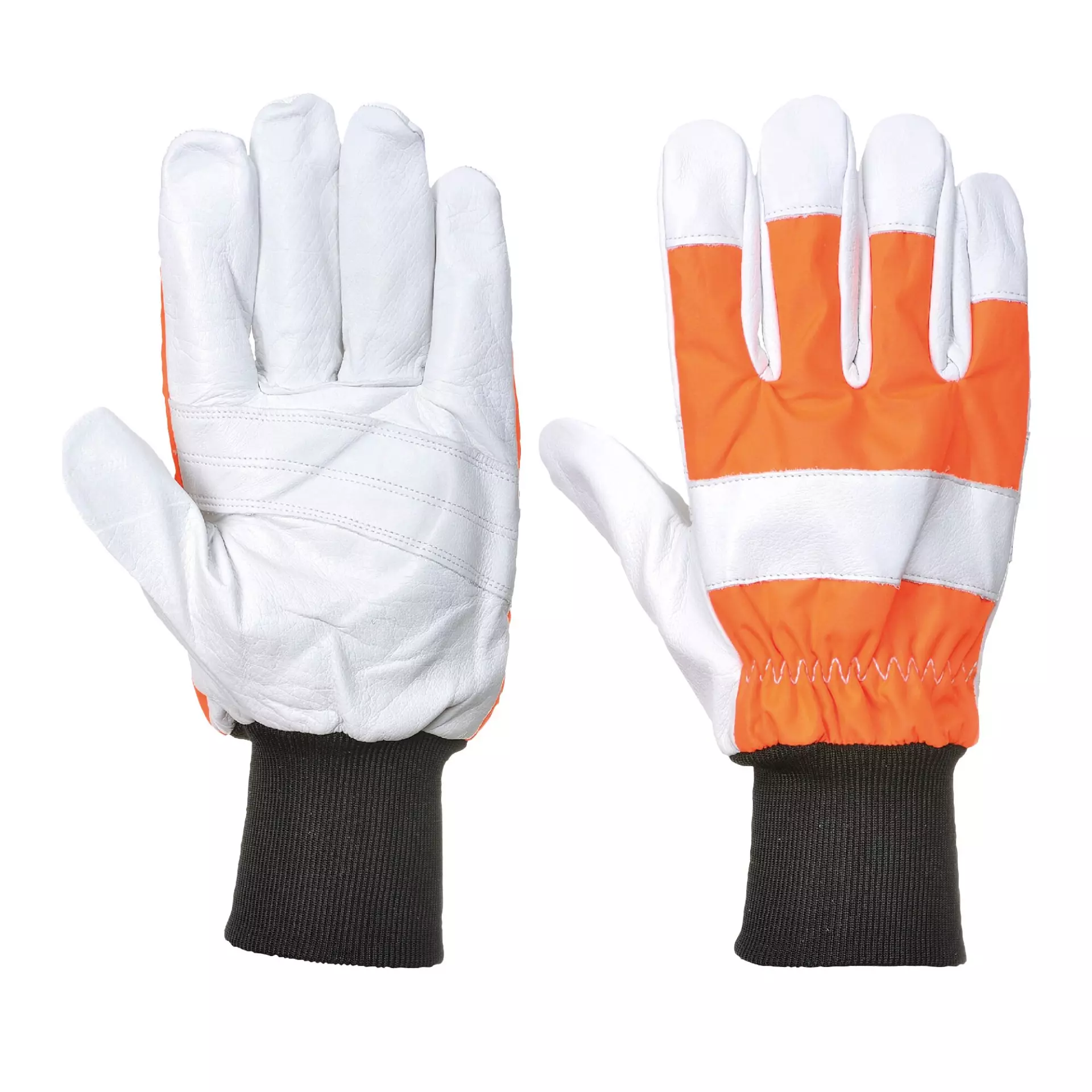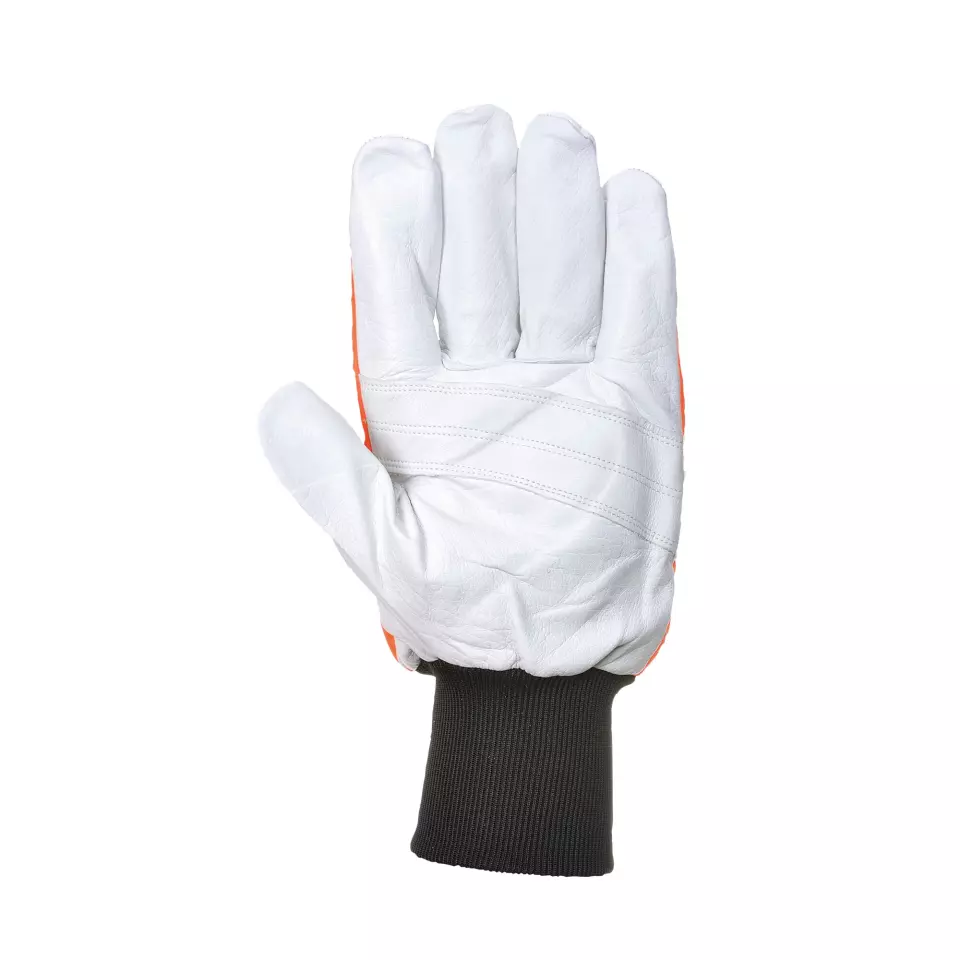


Features You'll Love

Glove Features · Reinforced Palm
Enjoy enhanced durability and protection where you need it most, extending glove life and improving grip.
Portwest
Oak Chainsaw Protective Glove (Class 0), Orange, 12 pairs
Oak Chainsaw Protective Glove (Class 0), Orange, 12 pairs
5 / 5
221,33 €
Price per 12 pairs
18,44 € / pair
Choose size
Out of stock
Free delivery
Features You'll Love

Glove Features · Reinforced Palm
Enjoy enhanced durability and protection where you need it most, extending glove life and improving grip.
Product description
Professional chainsaw protective glove engineered for maximum protection and comfort during chainsaw operations. Features a protective UHMWPE guard exclusively in the left glove to EN381-7 Class 0 standards, allowing unrestricted movement of the right hand while maintaining essential protection for speeds up to 16m/s. Constructed with premium leather and reinforced palm for enhanced durability in demanding forestry and construction applications.
Product Features:
- Left hand only chainsaw protection with UHMWPE guard
- Premium leather construction with reinforced palm
- Additional knuckle padding for extra protection
- Knitted cuff for secure fit
- Designed for saw speeds up to 16m/s
Technical Details:
- CE-CAT III certified
- Dexterity rating: Level 5
- Finnish Institute of Occupational Health approved
Recommended Applications:
- Construction, landscaping, agriculture and forestry
Standards:
- EN ISO 21420: 2020 Dexterity 5
- EN 388: 2016 + A1: 2018 (3123X)
- EN 381-7 Class 0